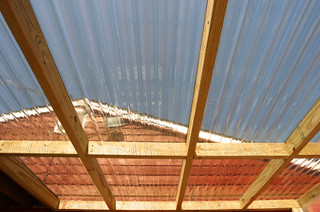Daily Gardening Lesson Greenhouse Hydroponics gardening provides amazing results.
The gardener controls every aspect of the environment in which the plants grow from the amount of sunlight to the nutrients.
This is a daily gardening lesson to help those who need further information on this topic.
Tips on Hydroponic Gardening inside Greenhouses:
1. Tempered glass on a greenhouse structure will allow for optimum transmission of light.
- Of course, this will have to be place on the greenhouse during the construction process.
2. Choose plants wisely. Select the varieties known for being resistant to disease for one thing.
This cuts down on issues down the way. Also, the varieties should be prolific in nature and hardy.
3. Provide the right substrate for the greenhouse hydroponics setup that you have.
- Sometimes no substrate is needed at all such as in the nutrient film technique.
- In this method, the plants are suspended in grow tubes.
- However, in the ebb and flow systems, Rockwool growing mediums are one of the preferred choices in horticultural medium options, to choose from. Basic ebb and flow hydroponics setups are very common, and often, can be the right choice.
4. Fans and proper ventilation techniques, are important to maintaining a steady temperature and humidity for hydroponically grown greenhouses.
5. Make sure that any plants requiring shade, are placed together in the greenhouse under shade curtain.
This reduces the amount of sunlight reaching the plant, while letting enough through for proper growth. Management of greenhouse temperatures by use of shade cloths and nets, are one of the easiest methods, and most popular.
6. Supplemental greenhouse lighting is useful for the days when the sunlight is not at its best.
This is especially true for plants requiring a lot of sunlight to grow.
7. Change out the nutrient solution, as needed to keep the solution from being depleted of the necessary nutrients for the plants.











